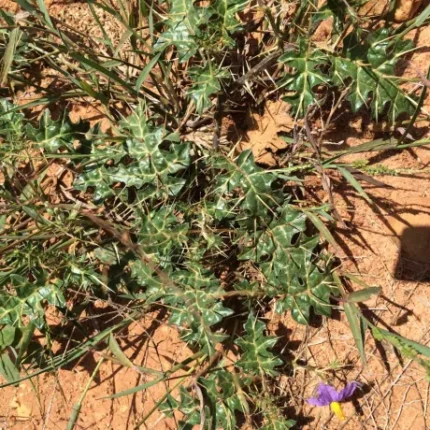Brihati is used for the management of various clinical conditions since ages. Brihat Trayi mostly described it along with Kantakari. Hence the name Brihati dvaya. It is also useful for Kasa and alongwith Kantakari its roots form the part of Dasamula.
Different Varieties–
In the text, two varieties of Brihati viz., Brihati and Sveta Brihati which are identified with S. indicum and S. torvum Swartz. Respectively.
Kaiyadeva enumerated 11 varieties of Brihati quoting other texts. They are : Simhi, Brihati, Kantakari, Nidigdhika, Valli Brihati, Vrtra Brihati, Sveta Brihati, Alambu phala Brihati, Amla Brihati, Jala Brihati and Sthula Brihati.
It is observed that other species of Solanum such as S. insanum Roxb. (Vanabhanta) and S. torvum (Sveta Brihati) are in common use. It is also noticed that S. aungvii and S. trilobatum (Tudvalai in Tamil) are in common use in the South India.
Dalhana in one of the contexts (S.S. Ut. 40/40) defined Brihati dvaya as the plant with smaller fruits (Sµuk¦ma phalŒ) and the plant with bigger fruits (Brihatphala) together as Brihati dvaya. He might have ment S. indicum and S. melongena Linn. (S. insanum) as the sources respectively. Both these are being used under the name Brihati at various parts of the country.
Botanical Description–
Herbaceous, stout, 2 m high, prickly and densely wooly. Leaves– ovate with short triangular lobes, villous above, stellately fulvous-woolly beneath. Flowers– in dense racemes, wooly, with needle-like hairs; igha shortly funnel-shaped, lobes ovate-triangular; corolla white-blue, oblong, acute. Fruits– berries, yellow when ripe. Seeds– smooth, many. Flowers and fruits during April-July.
Distribution– Found in the tropical parts of India.
Major Chemical Constituents– Solanine, Carotene, Carpesterol, Solanocarpone, diosogenin, -sitosterol, lanosterol, solasonine, solamargine, solasodine, vit. C etc.
Part Used– Root, fruit.
Dosage– Powder 3-5 g; decoction 50-100 ml.
Research–
(1) Solanine hydrochloride (obtained from S. ferox Syn. S. stramoniifolium Jacq.) – (25 ml/kg i.v.) administered to guinea pigs thrice every alternate day protected them against its lethal dose (40 mg/kg) – (antitoxic immunity). At 0.1 mg/kg, it inhibited sensitivity of guinea pigs to horse serum when given 48-72 hr before serum injection (Zh. Ushn. Nos. Gorl. Bolenz. 1977, 64).
(2) Both chloroform soluble and insoluble fraction of ethanolic extract showed cytotoxicity to colo-205 (colon), KB (nasopharynx), Hela (uterine cervix), HA 22T (hepatoma), Hep-2 (laryngeal epidermoid), GBM 8401/TSGH (glioma) and H1477 (melanoma) cells (Anticancer Res. 1991, 11, 1911).






Reviews
There are no reviews yet.